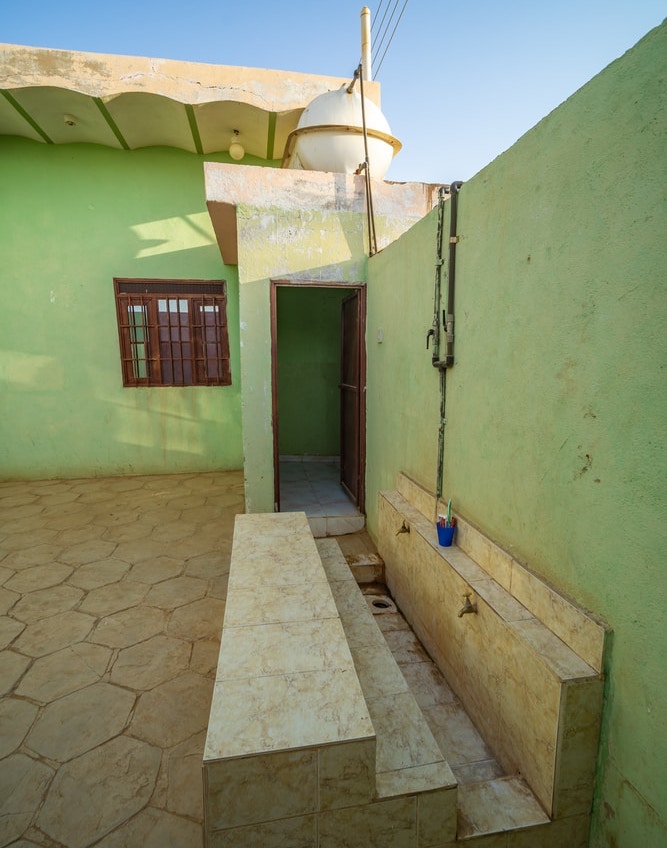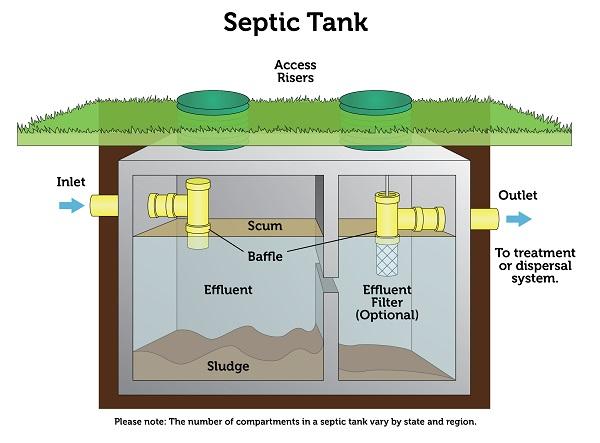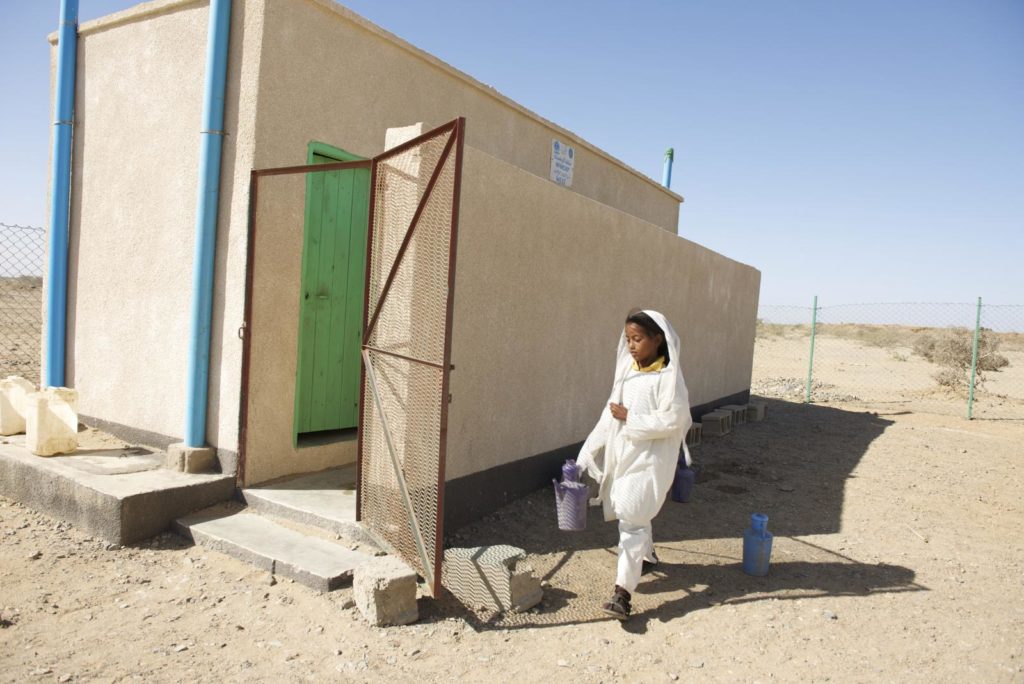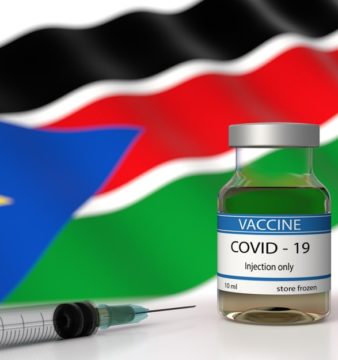How Sudan’s Sanitation Systems Threaten Our Health and Environment

‘The enjoyment of the highest attainable standard of health is one of the fundamental rights of every human being’. It’s been over 70 years since these words were adopted in the Constitution of the World Health Organization (WHO).
Adequate sanitation facilities, clean drinking water and good hygiene are fundamental to good health. Former UN Secretary-General, Kofi Annan, said, ‘We shall not defeat any of the infectious diseases that plague the developing world until we have also won the battle for safe drinking water, sanitation, and basic health care’. However, according to WHO, at least 2 billion people still live without access to basic sanitation facilities such as toilets or latrines, and the majority of them live in developing countries.
Sanitation 101
Sanitation ensures a hygienic separation between human excreta and human contact. WHO defines sanitation as:
‘Sanitation refers to the provision of facilities and services for the safe management of human excreta from the toilet to containment and storage and treatment on-site or conveyance, treatment and eventual safe end-use or disposal.’
There is a close relationship between the poor sanitation and transmission of diseases such as cholera, diarrhoea, Hepatitis A, Typhoid, polio, etc. Poor sanitation reduces human well-being, and social and economic development.
Adequate sanitation facilities
Improved sanitation facilities are the ones that not shared with other households. Besides, ensured that human excreta treated safely in situ-in or an off-site treatment plant. The wastewater must be a treat and reused or recycled, to prevent any access of sewage into the water resources whether it was surface water or groundwater.
Sanitation systems in Sudan

Image source: Wikipedia
In rural areas, the most common excreta disposal system is the pit latrines, which is a hole in the ground, collecting the human excreta and when it’s fulled, a new one is dug. Pit latrines have a lot of problems such as insects, flies and odours. These problems increase as far as the pit content increases. About 12% of pit latrines is excavated to the water table. This type of pit can cause serious contamination of groundwater. In addition, one of the deficiencies in the previous system is overflowing of the content outside, in the case of heavy rainfalls or floods; and therefore, mixing between excreta and rainwater, which in turn leads to the spread of a variety of diseases.
Meanwhile, in urban areas, such as the capital city, Khartoum, the most common system is the pit latrines, followed by the septic tank and well system. Septic tank and well system has a massive adverse impact on the environment and public health. In short, the septic tank is basically a chamber that receives wastewater. The primary aim of septic tank is to separate solids, fats, oils, and greases from wastewater. The significant problem of this system is that effluent from the septic tank is raw polluted water that is well connected with groundwater, meaning we are contaminating greatest water resource in our country.

In the last few years, Khartoum witnessed rapid urbanisation. As a result, the use of septic tank and well system increased, causing groundwater levels to rise and as a result, affecting buildings in several parts of Khartoum including Wad Nubawi, Bayt Al Mal and Al Mulazmin. Another major challenge is the improper design of the septic tank itself, which leads to overflowing of water and blockages in the well, which obliges users to occasionally draw well water, and that’s very costly.
Despite the fact that the first sewer network system in Sudan was built in 1959, only 2.8% of the population of Khartoum and 0.8% of Sudan’s population currently has access to the sewerage system. However, even this limited service is facing a number of drawbacks related to insufficient system capacity, because the users doubled without any update or expansion of the network.
The latest sanitation system is open defecation or using neighbours pit latrines. It’s hard to believe that 27% or 11 million Sudanese still practice open defecation. According to WHO, open defecation is the leading cause of diarrheal death. In addition, the lack of safe, private toilets for women and girls exposes them to the risk of sexual assault, anxiety and other forms of trauma. In addition, the lack of safe, private toilets for girls at schools is a reason many girls avoid going to school.

Since independence, all of the successive governments of Sudan did not have sufficient importance to improve the sanitation system in the country. Improving or building adequate sanitation systems need considerable cost, particularly the cost of the construction network, which is more expensive than plant treatment systems. However, governments should devise long and short term strategies to achieve the dream of having improved sanitation facilities for all Sudanese.
The Sudan Partnership Conference, which took place on 25 June 2020, would have been a great opportunity for the government to present development projects related to sanitation and water. Partners would have pledged much more than the current amount, which is a total of USD1.8 billion.
I call upon the Prime Minister Abdalla Hamdok, Minister of Infrastructure and Transportation, Hashim Ibnauf, and the government as a whole to seriously consider sanitation systems in Sudan and work on developing improved sanitation facilities. In addition, I call upon all environmental activists to put the spotlight on the hazardous septic tank and well systems on public health and environment.
Eventually, we need to channel the poor sanitation crisis in Sudan into great business opportunities. The private sector and entrepreneurs should invest in this great cause, which benefits everyone. As the late Indian activist Mahatma Gandhi once said, ‘Sanitation is more important than independence’.

Moayad Mutwalli is a final-year civil engineer at the University of Khartoum, interested in political science, economics and technologies. He is an environmental activist, and above all, a truth seeker.




